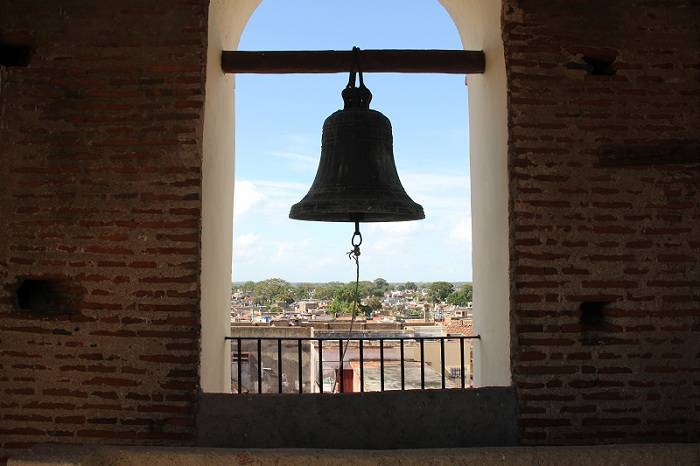It was the 18th of November of 1492 and the ships had been caulked and provided with firewood and water, the admiral ordered the carpenter of the Santa María ship to build a great cross with two logs found on the sea. He decided to nail it somewhere flamboyant that some historians locate in Punta del Guincho, in the bay of Nuevitas, current Camagüey province.
Perhaps the Advanced Diego Velázquez, one of the many men that accompanied Columbus in his second voyage, twenty years later wanted to rescue the memory of the notorious sailor and that of his leader ship when he baptized the bay and the villa with the name of Santa María del Puerto del Príncipe, so charged with sacred and monarchic presences. His first neighbours assured to treasure among their relics the cross nailed in that first exploration sailing of the Admiral, but the truth is that the more recent Columbus biographers indicate that during his first trip Columbus did not go further than the current territory of Holguín.
Outside of the actual territory of Holguín or Camagüey, the truth is that before departing to The Hispaniola and in spite of having enjoyed a positive welcoming Columbus’ men captured some adult Indians and three children and sent them to the Niña ship with the intention to take them to Castile and display them to the kings together with other gathered curiosities in the newly found place, among them corn, tobacco, some cotton hamacs, clay casseroles and other Siboneyes objects.

Years later, towards 1510 the conquest of Cuba began by the Advanced Diego Velázquez and the territory of Camagüey earned a prominent spot in history for sadly notorious reasons. After defeating the aboriginal resistance in the eastern part of Cuba and having burnt the rebellious Indian chief Hatuey at the bonfire, Velázquez’s men lead by Pánfilo de Narváez with Friar Bartolomé de las Casas as part of the expedition advanced in 1513 towards the west and paid visits along the way to the Indian communities of Guáimaro, Sibanicú and Camagüey and in all of them they were served and fed with the greatest of intentions on behalf of the aborigines.
In the words of de las Casas in his ““Brevísima relación de la destrucción de las Indias” writing said that when they got to a great town near Caonao, the aborigines came out to welcome them with “upkeeps and gifts… and once there we were given a great deal of fish, bread and food along with all else they asked for; all the sudden the devil revisited the Christians and in my presence they stabbed knives (without a motive or cause) to more than three thousand souls that were sat in front of us, men, women and children. There I saw such great cruelty that never had the living seen or thought of”. The priest wrote in horror such episode against the pacific Siboneyes, they had “the sweetest and mildest talk in the world, and always filled with laughter”: There it went “the bloodstream as if many cattle had been slaughtered”.

In the “Cueva de los Generales” cave near the Sierra de Cubitas full of windings and hollowness those primitive Siboneyes –that for the first time saw men on horses- left a pictographic testimony filled with moving naivety: an arrogant Castilian appears on his mount in which the horse’s feet get confused with that of the man’s holding a sword on his right hand and touched by a helmet topped with a Christian cross, symbol of what the conquest would become.

